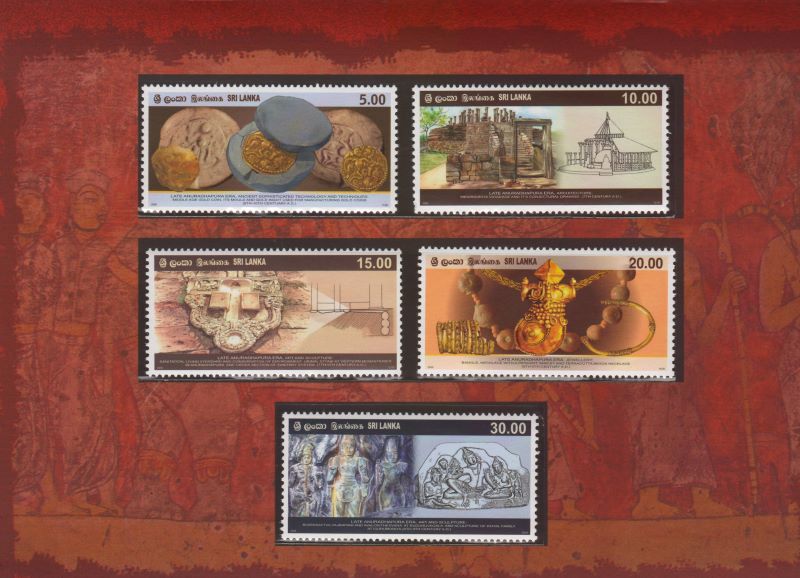WORLD BUDDHIST STAMPS e.GALLERY
bringing the buddhist world at the comfort of your home
| Sri Lankan Cultural Heritage | |
Sri Lanka is a tropical island off the South-Eastern coast of India, and north of the equator in the India Ocean. Topographic diversity ranges from the coastal plains with palm-fringed, sandy beaches to the centre of the country. In ancient times, Sri Lanka was known by a variety of names; ancient Greek geographers called it “Taprobane “, Arabs referred to the island as “Serendib”. “Cello” was the name given to Sri Lanka by the Portuguese which was transliterated into English as “Ceylon”. In 1972, the official name of the country was changed to “Sri Lanka”. Because of its location, it has long been considered a strategic naval link between the West and Asia. It has been a centre for Buddhism and Buddhist culture for almost 2500 years.
Stamps depicting:
RanKahavanu is a type of coin used in Ceylon from 8th century AD to the 11th century AD. The coins have been manufactured by pouring molten gold into a clay mold made in the form of two lids. Several lump of gold recovered at the Abhayagiriya excavations have been identified as gold ingots “Swarna Palaka Pinda”.
The Meidirigiriya Viharaya has been a prominent Buddhist Sangarama in existence from the early Anuradhapura period. The most glorious architectural construction of the Vihara complex is considered to be the Vatadageya. It is erected on an elevated circular dais, encircling the smaller stupas, gains prominence as an excellent architectural structure among all other Vatadageyas in existence. This stamp depicts the remnants of this Vatadage and a conjectural design of the original nature of the Vatadage, determined after an extensive study.
This is a urinal stone belonging to the Western Monastery “Padhanagara” complex reserved for Pansakulika monks. In this Padhanagara complex the only art of carving is to be found in the urinal stone. Scholars are of the opinion that these carvings made only on the urinal stone reflects the view that all worldly possessions should be shunned .
The jewellery recovered at Abahayagiriya are fabulous creations which portray the expertise in jewellery manufacturing. A necklace with a pendant , a bangle and foot ornaments are included . The fine and delicate carvings herein depicts the excellent creative ability of the sculptor, The necklace is made of gold thread. The necklace adorned with clay beads shown in the background, was gathered from the Jetawana Vihara complex. All these belong to the post Anuradhapura period.
The Buduruvagala Bodhisattva statue carved on a mountain, remains an exemplary carving among the Mahayana statues in Sri Lanka. The present remnants provide evidence that the statue was plastered and stained later. Depicted here are the Avalokitesvara Matreiya and Wajrapani Bodhisattva triad in existence among other statues. The statues are considered to belong to the 8th – 9th centuries AD.
|
|
| Issued Country | Sri Lanka |
| Issued Year | 2008 |
| Category | Buddhist Architect World Heritage Buddhist Arts Buddhist Landscape |
| Type | Commemorative/Special Stamps |
